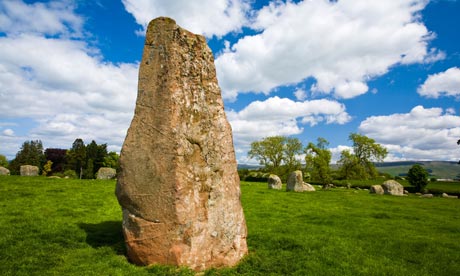megalith

Long Meg (foreground) and her Daughters (background) in Cumbria.
A megalith is a large block of stone or boulder of irregular shape, only very roughly dressed or left as found. The Megalithic was a western European culture of the Neolithic and Copper Age, distinguished by the presence of monuments made of large stones. These stones were used for funeral or other, often ceremonial, purposes.
Megalithic monuments in Europe are dated c. 4000–1000 BC and are of five main types: the menhir or single stone standing upright; the group or alignment of menhirs arranged in rows as at Carnac in Brittany where nearly 3,000 survive; circular settings or stone circles as at Stonehenge (c. 1800 BC) which is architecturally unique (a circle of evenly spaced uprights with a continuous curving lintel, enclosing trilithons); chamber tombs walled and roofed with megaliths, known as cairns and barrows in England and Scotland, as cromlechs in Wales, and as dolmens in France and Spain. Chamber tombs are constructed in a variety of ways, the so-called Treasury of Atreus at Mycenae, Greece, being the most sophisticated, and usually covered with rubble or earth to form a mound or tumulus, now sometimes obliterated by natural erosion. Finally there are the apsidal megalithic temples of Malta, e.g. Mnaidra of c. 2800–1900 BC.
